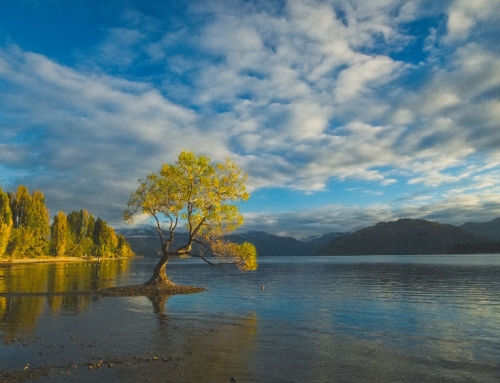Join us for a quick lesson in getting started with the Exposure Bundle. Exposure is at the center of the bundle, providing you with an arsenal of tools to unleash your creative side and keep your photos organized. The video demonstrates how to give your images a human touch using Exposure, make tack-sharp enlargements with Blow Up, and explore the endless possibilities of turning your photos into handcrafted paintings with Snap Art.
Photos: John Barclay
Transcript
Exposure is the centerpiece of the product. It’s where you organize, edit, and launch the other programs in the bundle. This demonstration uses Exposure as a standalone photo editor, but each of the bundle apps also work as plug-ins with Lightroom or Photoshop. Visit our website for videos about those situations.
Exposure is a full-featured photo editor that handles your entire workflow. Begin using Exposure when copying images from cards, then categorize them with flags, ratings, and labels. Exposure enables you to organize photos with sorting, filtering, and metadata search tools. Exposure also has advanced categorization features like keywords, collections, and smart collections.
Visit our website for tutorials about those and other organizing features.
Use the Folder panel to navigate to folders on your computer. Click on a folder’s name to view its contents. If the folder you want to work in isn’t listed, click the ‘add’ button and browse to the folder you want.
Double-click an image to view it at full size. Notice that all of your editing and organizing in Exposure occurs in the same UI. There is no need for different user interface modules.
Exposure’s library of carefully curated presets make quick work of editing photos. Use them to apply an accurate reproduction of a classic, modern, or vintage film, or an entirely new creative look to photos. Hover over preset thumbnails to see the presets will look when applied to the selected image. Click to apply it.
Exposure’s presets are great on their own, and they are useful as starting points for custom looks. Easily make editing adjustments to images with the powerful tools in each of the panels in the right-hand dock. The Basic panel, for example, provides controls to adjust exposure, contrast, and saturation. It also has Auto adjustments that intelligently apply tweaks to develop your photos.
All of Exposure’s editing panels are demonstrated in our library of tutorial videos, if you are needing more detailed information on using them.
Artistic Natural Media Effects Using Snap Art
Snap Art makes it easy to apply natural media effects like oil paint and watercolor. Simply right-click on an image in Exposure, select Edit Copy In and Snap Art.
A list of natural media types appears in the Presets panel. Open the Effects Tour folder for a quick preview of each of the 11 categories.
To enlarge the preview thumbnails, collapse the Editing panel and expand the presets panel. This makes it easy to scroll through large-size previews of all the different natural media looks.
Select the preview thumbnail to apply it. Refine the effect with the editing panels on the right dock. When making adjustments, start with the controls at the top of the panel and work your way down. Once complete, the edits are saved into the same folder as the original image, and are visible in Exposure.
For more detailed instructions on using Snap Art, check out the other tutorials on our website.
Sharp Image Resizing Using Blow Up
To access the Blow Up image enlargement tools, right-click on the image in Exposure, choose Edit Copy in, and Blow Up.
To the left is the thumbnail navigator and the User Settings panel. In the center are zooming and panning controls. On the right side are the adjustment tools. These include a button for each resizing mode: Crop & Resize, Resize, and Stretch.
Crop & Resize crops the image to proportionally fill the output. It places the crop area over the most interesting part of your image, automatically. You can fine tune this location easily.
Resize mode resizes the image while retaining its original proportions, without cropping or stretching.
Stretch mode forces the image to fit the output size. This is best used when the output size and photo size are nearly identical.
After selecting the mode, choose the document size. Make refinements like adding grain and sharpening for output, which compensates for ink diffusion on paper.
If you’re processing images using each app in the Exposure Bundle, it’s best to apply the Snap Art natural media effects after you’ve enlarged your image using Blow Up. This will give the sharpest looking output.


